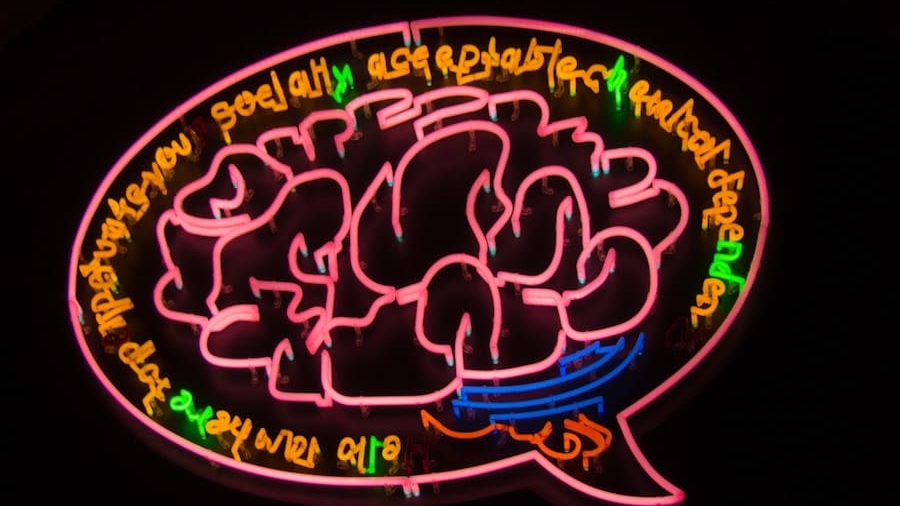Deep learning, a subset of machine learning, has revolutionized various fields, including computer vision, speech recognition, and notably, natural language processing (NLP). At its core, deep learning employs neural networks with multiple layers to model complex patterns in data. This approach has enabled machines to process and understand human language with unprecedented accuracy and efficiency.
Natural Language Understanding, a critical component of NLP, focuses on the ability of machines to comprehend and interpret human language in a way that is both meaningful and contextually relevant. This understanding encompasses various tasks, such as sentiment analysis, language translation, and question-answering systems. The intersection of deep learning and natural language understanding has led to significant advancements in how machines interact with human language.
Traditional rule-based systems struggled with the nuances and ambiguities inherent in human communication. In contrast, deep learning models can learn from vast amounts of text data, capturing the subtleties of language through exposure rather than explicit programming. This paradigm shift has not only improved the performance of NLP applications but has also expanded their scope, enabling more sophisticated interactions between humans and machines.
Key Takeaways
- Deep learning is a subset of machine learning that uses neural networks to mimic the human brain’s ability to learn and understand patterns.
- Deep learning plays a crucial role in natural language processing (NLP) by enabling machines to understand, interpret, and respond to human language.
- Deep learning has various applications in NLP, including language translation, sentiment analysis, chatbots, and speech recognition.
- Despite its advancements, deep learning in NLP faces challenges such as bias, lack of interpretability, and data privacy concerns.
- Advancements in deep learning techniques for NLP, such as transformer models and pre-trained language models, have significantly improved language understanding and generation capabilities.
The Role of Deep Learning in NLP
Deep learning plays a pivotal role in enhancing the capabilities of natural language processing by providing robust frameworks for understanding and generating human language. One of the most significant contributions of deep learning to NLP is the development of word embeddings, which are dense vector representations of words that capture semantic relationships. Techniques such as Word2Vec and GloVe have transformed how words are represented in computational models, allowing for a more nuanced understanding of context and meaning.
These embeddings enable algorithms to discern similarities between words based on their usage in large corpora, facilitating tasks like synonym detection and semantic similarity assessments. Moreover, deep learning architectures such as recurrent neural networks (RNNs) and transformers have further advanced NLP capabilities. RNNs are particularly adept at handling sequential data, making them suitable for tasks like language modeling and machine translation.
However, the introduction of transformer models, exemplified by BERT (Bidirectional Encoder Representations from Transformers) and GPT (Generative Pre-trained Transformer), has marked a significant leap forward. These models leverage self-attention mechanisms to process entire sequences of text simultaneously, allowing for a deeper understanding of context and relationships within the data.
Applications of Deep Learning in Natural Language Understanding

The applications of deep learning in natural language understanding are vast and varied, spanning numerous industries and use cases. One prominent application is sentiment analysis, where deep learning models analyze text data from social media, reviews, or customer feedback to determine the sentiment expressed—be it positive, negative, or neutral. By employing convolutional neural networks (CNNs) or recurrent neural networks (RNNs), businesses can gain insights into customer opinions and preferences, enabling them to tailor their products and services accordingly.
Another significant application is machine translation, which has seen remarkable improvements due to deep learning techniques. Traditional statistical methods often struggled with idiomatic expressions and contextual nuances. However, deep learning models like Google’s Transformer have dramatically enhanced translation quality by considering entire sentences rather than isolated phrases.
This capability allows for more accurate translations that preserve meaning across languages. Additionally, chatbots and virtual assistants have become increasingly sophisticated through deep learning, enabling them to understand user queries more effectively and provide relevant responses in real-time.
Challenges and Limitations of Deep Learning in NLP
Despite the remarkable advancements brought about by deep learning in natural language understanding, several challenges and limitations persist. One major issue is the requirement for vast amounts of labeled training data. Deep learning models thrive on large datasets to learn effectively; however, acquiring high-quality annotated data can be resource-intensive and time-consuming.
In many languages or specialized domains, such data may be scarce or nonexistent, limiting the applicability of these models. Another challenge lies in the interpretability of deep learning models. While these models can achieve impressive performance metrics, they often operate as “black boxes,” making it difficult for researchers and practitioners to understand how decisions are made.
This lack of transparency can be problematic in sensitive applications such as healthcare or legal systems, where understanding the rationale behind a model’s output is crucial for trust and accountability. Furthermore, deep learning models can inadvertently learn biases present in training data, leading to skewed or unfair outcomes that can perpetuate stereotypes or discrimination.
Advancements in Deep Learning Techniques for NLP
Recent advancements in deep learning techniques have significantly enhanced the capabilities of natural language understanding systems. One notable development is the introduction of pre-trained language models that can be fine-tuned for specific tasks with relatively small amounts of task-specific data. Models like BERT and RoBERTa have set new benchmarks in various NLP tasks by leveraging transfer learning principles.
By pre-training on large corpora and then fine-tuning on smaller datasets, these models achieve high performance while reducing the need for extensive labeled data. Additionally, innovations in model architecture have led to more efficient training processes and improved performance. Techniques such as attention mechanisms allow models to focus on relevant parts of input sequences dynamically, enhancing their ability to capture context and relationships within text.
Furthermore, advancements in unsupervised learning methods are paving the way for models that can learn from unannotated data, broadening their applicability across languages and domains where labeled data is limited.
Ethical Considerations in Deep Learning for NLP

As deep learning continues to advance natural language understanding, ethical concerns have become a critical area of attention.
### Bias in Language Models
Since language models are trained on large datasets sourced from the internet, they may inadvertently learn and propagate societal biases present in that data. For instance, if a model is trained on text that reflects gender stereotypes or racial biases, it may produce outputs that reinforce these prejudices. Addressing this issue requires ongoing research into bias detection and mitigation strategies to ensure that NLP applications promote fairness and inclusivity.
### Privacy Concerns
Many NLP applications rely on vast amounts of user-generated content for training purposes. This raises questions about consent and data ownership, particularly when sensitive information is involved. Developers must navigate these ethical dilemmas carefully to ensure that user privacy is respected while still harnessing the power of deep learning for meaningful applications.
### The Future of NLP
Ultimately, the future of NLP depends on the ability to address these ethical concerns.
Future Implications of Deep Learning in Natural Language Understanding
The future implications of deep learning in natural language understanding are vast and promising. As technology continues to evolve, we can expect even more sophisticated applications that enhance human-computer interaction. For instance, advancements in conversational AI could lead to virtual assistants that understand context better than ever before, enabling seamless interactions across various platforms—be it customer service chatbots or personal digital assistants.
Moreover, the integration of multimodal approaches—combining text with other forms of data such as images or audio—could further enrich natural language understanding systems. This convergence may lead to applications that not only comprehend text but also interpret visual cues or vocal tones, resulting in more holistic interactions between humans and machines. As research progresses, we may also witness breakthroughs in low-resource languages, making advanced NLP capabilities accessible to a broader audience worldwide.
The Impact of Deep Learning on NLP
The impact of deep learning on natural language processing has been transformative, reshaping how machines understand and interact with human language. Through advancements in model architectures and training techniques, deep learning has enabled significant improvements in various NLP applications—from sentiment analysis to machine translation—enhancing both accuracy and efficiency. However, challenges such as data requirements, interpretability issues, and ethical considerations remain critical areas for ongoing research and development.
As we look ahead, the potential for deep learning to further revolutionize natural language understanding is immense. With continued innovation and a focus on ethical practices, we can anticipate a future where machines not only understand language but also engage with it in ways that are meaningful and beneficial to society at large. The journey toward achieving truly intelligent natural language understanding systems is ongoing, but the strides made thus far underscore the profound impact that deep learning has had on this dynamic field.
If you are interested in exploring the latest advancements in technology, you may also want to check out this article on the best antivirus software in 2023. This article provides valuable insights into how technology is evolving to protect our digital devices from cyber threats. It is a great resource for staying informed about the latest trends in cybersecurity.
FAQs
What is deep learning?
Deep learning is a subset of machine learning that uses neural networks with multiple layers to learn from data. It is inspired by the structure and function of the human brain, and is used to recognize patterns and make decisions based on input data.
How is deep learning enhancing natural language understanding?
Deep learning is enhancing natural language understanding by enabling machines to process and understand human language in a more sophisticated way. It allows for the development of language models that can understand context, nuance, and ambiguity in human language, leading to more accurate and natural interactions between humans and machines.
What are some applications of deep learning in natural language understanding?
Some applications of deep learning in natural language understanding include language translation, sentiment analysis, chatbots, speech recognition, and text summarization. Deep learning models are also used in search engines, virtual assistants, and language generation tasks.
What are some challenges of using deep learning for natural language understanding?
Challenges of using deep learning for natural language understanding include the need for large amounts of labeled data, the potential for bias in the training data, and the complexity of training and fine-tuning deep learning models. Additionally, deep learning models may struggle with understanding context and sarcasm in human language.
What are some popular deep learning models for natural language understanding?
Some popular deep learning models for natural language understanding include recurrent neural networks (RNNs), long short-term memory (LSTM) networks, and transformer models such as BERT (Bidirectional Encoder Representations from Transformers) and GPT (Generative Pre-trained Transformer). These models have been widely used for various natural language processing tasks.

